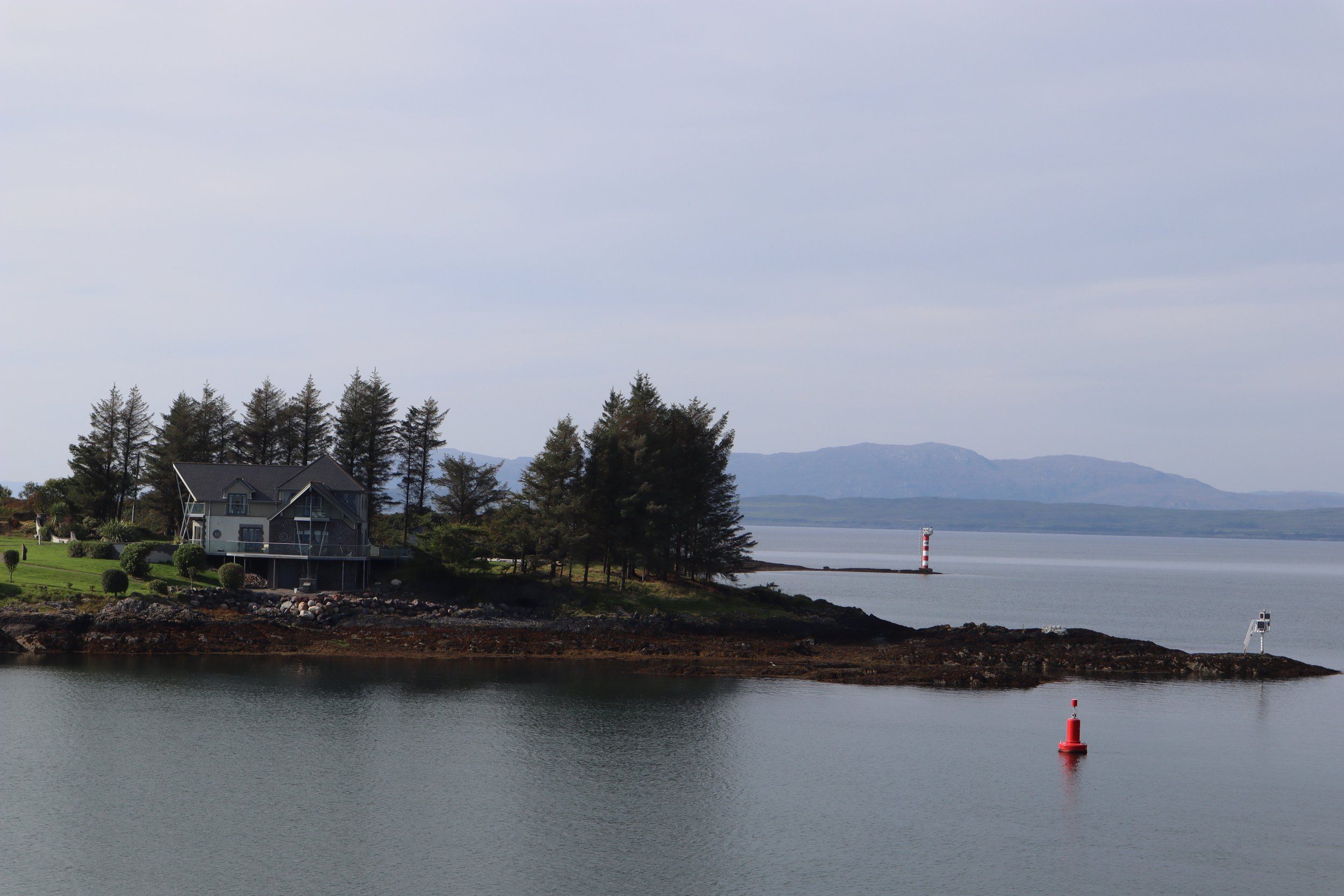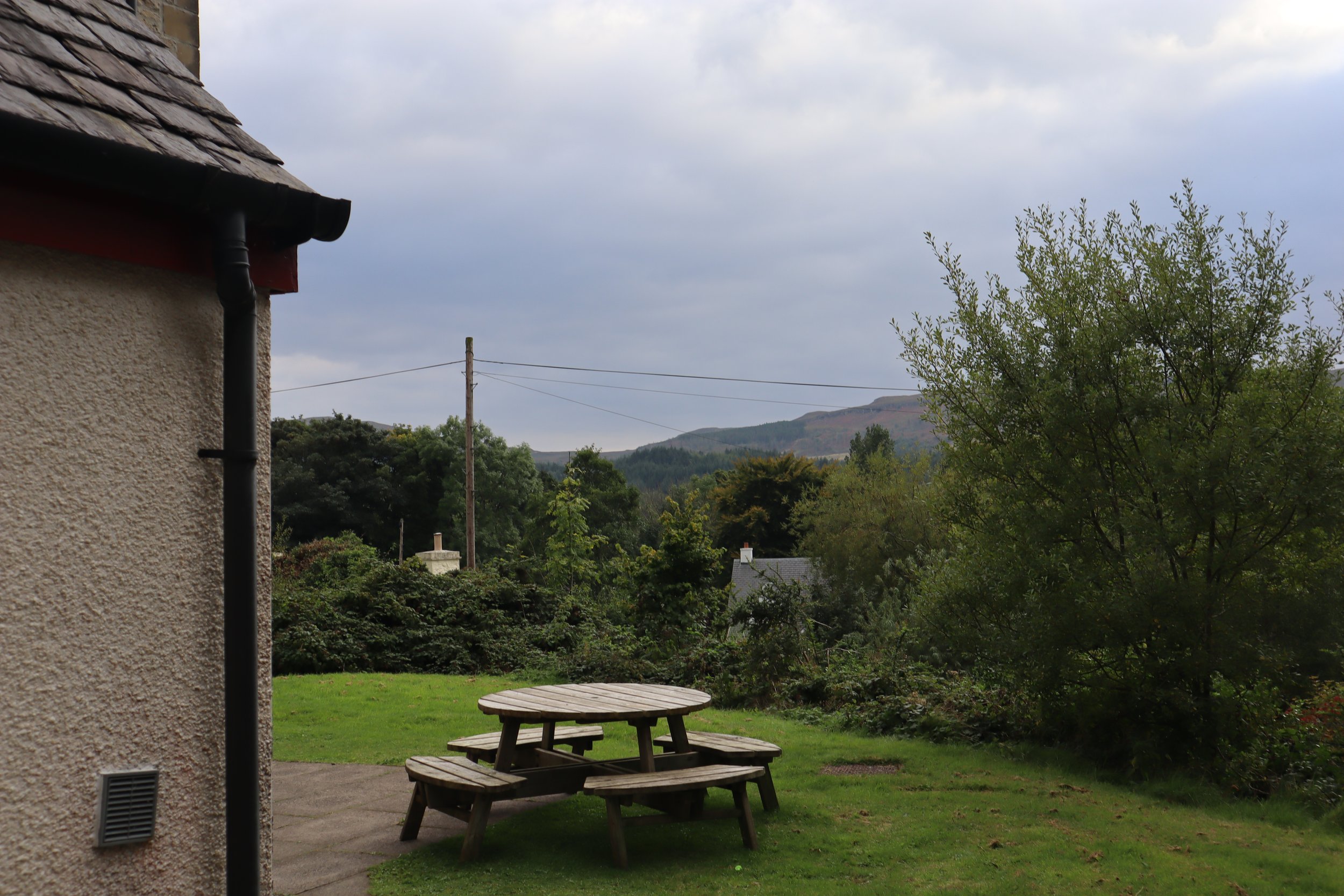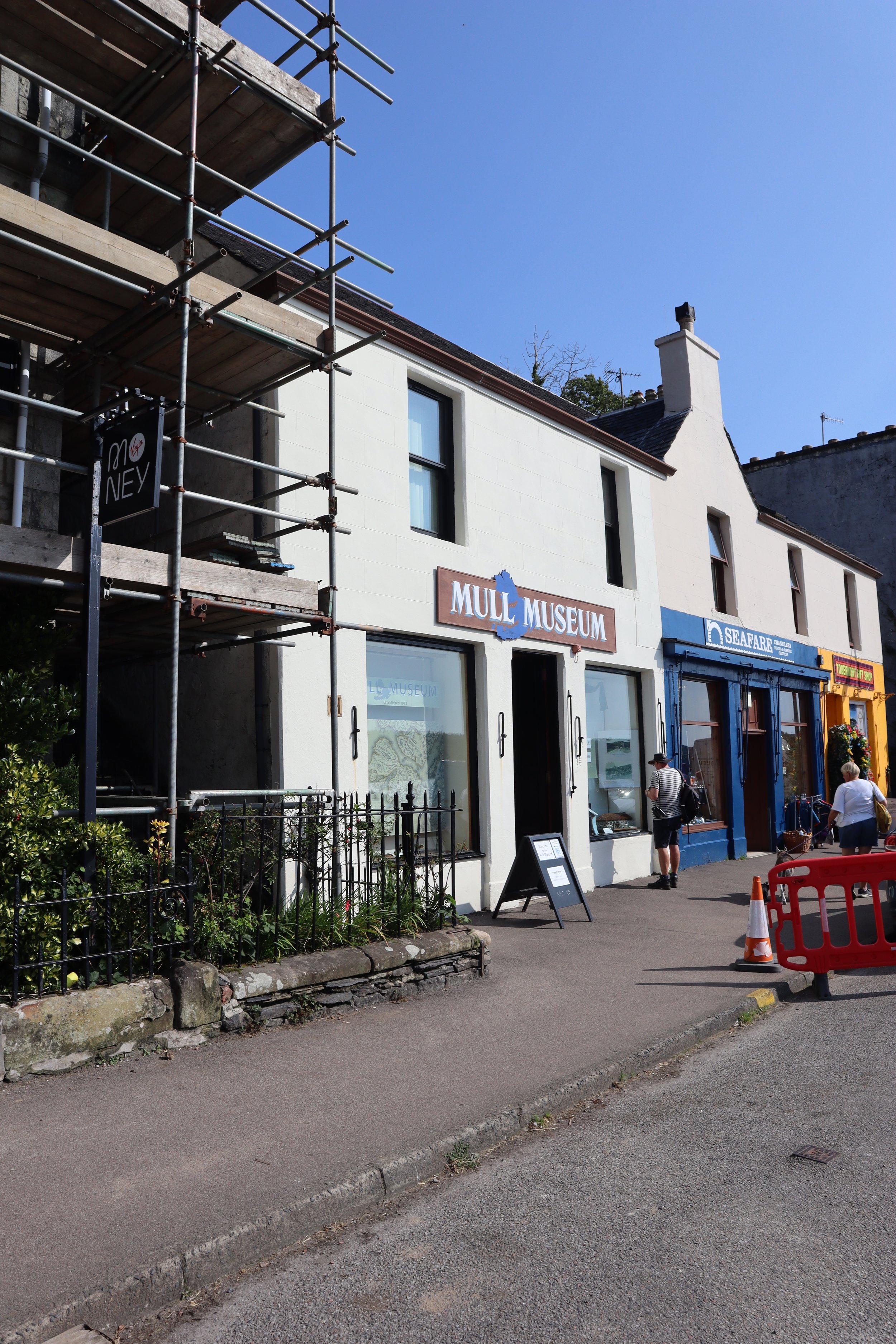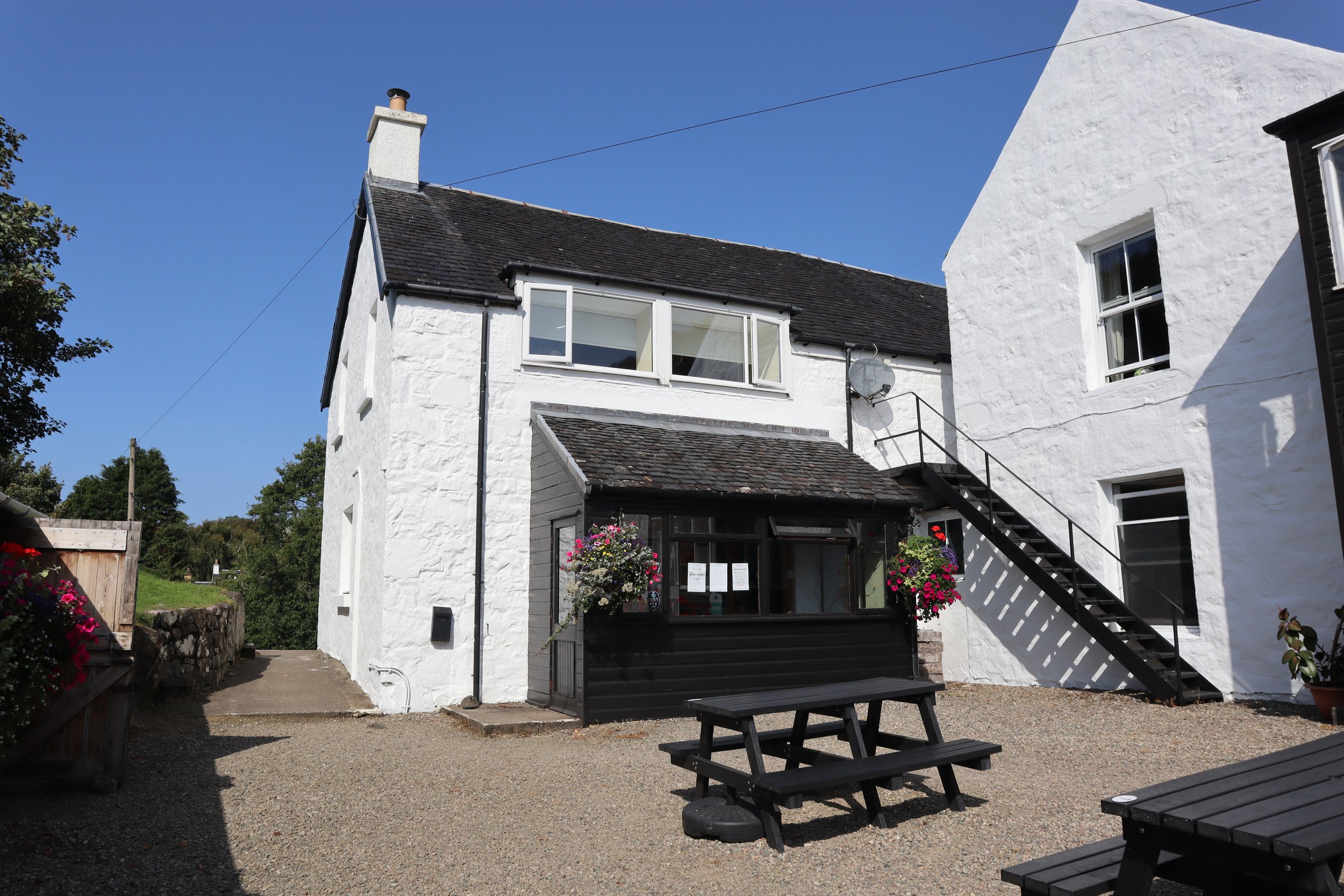
Isle of Mull
Scotland
The Isle of Mull is in the Hebrides group of islands on the west coast of Scotland. When the region Highlands and Islands is refered to, the Inner and Outer Hebrides are a part of that. I have been to the Isle of Skye, another part of that region, and I visited the Isle of Mull recently (September 2023) as a part of my family history tour of Scotland. It is an incredibly beautiful part of the world, and well worth the effort to visit.
The port of Oban on the ferry to Mull
A ferry coming to dock in Oban
Leaving Oban….
Arriving on the Isle of Mull at Craignure
I didn’t know anything about the Isle of Mull when I went there, except that it was where my great grandmother’s family originated, before Hugh Campbell and Mary McIntyre emigrated to Australia with the Highlands and Islands Emigration Society (more on that later). I knew that Hugh’s family was from Dervaig (on the north end of the island), and that I wanted to see it for myself. On the ferry ride over I found that there was a small book store on board, and they had a booklet about Mull and it’s people, so I purchased it to find out a little bit more. I was astounded to find that Duncan and Janet (McLean) Campbell were mentioned in the booklet, as was their youngest son John Campbell (whose cross shaped headstone appears in the image at the top of this page), brother to Hugh. The author, Jo Currie, has written a comprehensive tome called Mull, The Island and it’s People (Birlin Press, my copy is the first paperback edition 2001).
Ordinance map of Isle of Mull from Wikipedia, https://en.wikipedia.org/wiki/Isle_of_Mull#/media/
File:Ordnance_Survey_1-250000_-_NM.jpg
The Isle of Mull is the second-largest island of the Inner Hebrides (after Skye) and lies off the west coast of Scotland in the council area of Argyll and Bute.
Covering 875.35 square kilometres (337.97 sq mi), Mull is the fourth-largest island in Scotland and Great Britain. From 2001 to 2020, the population has gradually increased: during 2020 it was estimated to be 3,000, in the 2011 census it was about 2,800, and in 2001, it was measured at 2,667 people. It has the eighth largest island population in Scotland. In the summer, these numbers are augmented by an influx of many tourists. Much of the year-round population lives in the colourful main settlement of Tobermory.
Mull has a coastline of 480 km (300 mi), and its climate is moderated by the Gulf Stream. The island has a mountainous core; the highest peak on the island is Ben More, which reaches 966 m (3,169 ft). Various peninsulas, which are predominantly moorland, radiate from the centre.
Numerous islands lie off the west coast of Mull, including Erraid, Inch Kenneth, Iona, Gometra, and Ulva. Smaller uninhabited islands include Eorsa, Little Colonsay, the Treshnish Isles, and Staffa (of Fingal's Cave fame). Calve Island is an uninhabited island in Tobermory Bay. Two outlying rock lighthouses are also visible from the southwest of Mull: Dubh Artach and Skerryvore.
Settlements: Places classified as settlements by the Ordnance Survey include:
Achleck, Achnahard, Ardalanish, Ardtun, Aridhglas, Ballygown, Balnahard, Bunessan, Calgary, Carsaig, Craignure, Creich, Croggan, Dervaig, Fanmore, Fionnphort, Gruline, Java, Kilninian, Kintra, Knockan, Ledaig, Lee, Lochbuie, Lochdon, Lower Ardtun, Pennyghael, Salen, Strathcoil, Strongarbh, Tobermory, Uisken.
en.wikipedia.org/wiki/Isle_of_Mull
I landed at Craignure and drove up to Dervaig through Salen. The roads are only single lane (by which I mean you have to pull off the road to let others pass in the opposite direction), and it took a little getting used to after the wide open roads of Australia. I used Dervaig as my base while on the island, because I wanted time to explore where the Campbells and the McLeans were from. I settled in, and planned my journey around Mull. The next morning I decided to go to Tobermory, to the Mull Museum as I had been given a lead to go there. On the way out of town, I found the old Dervaig cemetery, and decided to stop and take some photographs.
Views taken from the bunkhouse at the Dervaig town hall, where I stayed on Mull
The old Dervaig cemetery
Tobermory was about an hour’s drive north-east of Dervaig - not that far as the crow flies, however the road is extremely narrow and winding. As with everywhere I went in Scotland, it was beautifully scenic, and the village of Tobermory itself was amazing. I spent about five hours there, visiting shops and cafes, a gallery and most imprtantly, the Mull Museum. Jo Currie (mentioned above, author of Mull, The Island and its People) had donated all of her index cards (several thousand) to the museum, and I was extremely lucky to be able to look at them. I found information that I didn’t already have about the Campbells and the McLeans. (See the page The Magills).
Tobermory, from left to right: The gallery, storefronts, the town clock, the museum
I left Tobermory with a lot of useful information, and returned to Dervaig to further explore the village. Dervaig is very small, only one main street, the Bellachroy Inn, and the Kilmore Church.
The Bellachroy Hotel dates back to 1608, and is the oldest inn on the island.
Dervaig is a small village on the Isle of Mull off the west coast of Scotland. The village is within the parish of Kilninian and Kilmore, and is situated on the B8073 roughly midway between Tobermory and Calgary. In 1961 it had a population of 82.
Etymology
Both the English name Dervaig and the Gaelic name Dearbhaig are derived from the Old Norse Dervig, meaning "good inlet", referring to Loch a'Chumhainn which the town sits on.
https://en.wikipedia.org/wiki/Dervaig
The town is known for its unusual round church Kilmore Church. The original church was built in 1755, however, there is not a complete description of it in the records, so it is unknown what it looked liked. It was built to replace the nearby Church of Kilcolmkil and is thought to be very similar to the church of Kilninian which was built at a similar time but still stands. The existing church was built in 1905, being designed by Glasgow architect Peter MacGregor Chalmers with stained glass by Stephen Adam. The "pencil" shape design of the tower is an uncommon sight nowadays in Scotland, however many similar churches still survive in Ireland. The church was renovated in 2004.
https://en.wikipedia.org/wiki/Dervaig


















